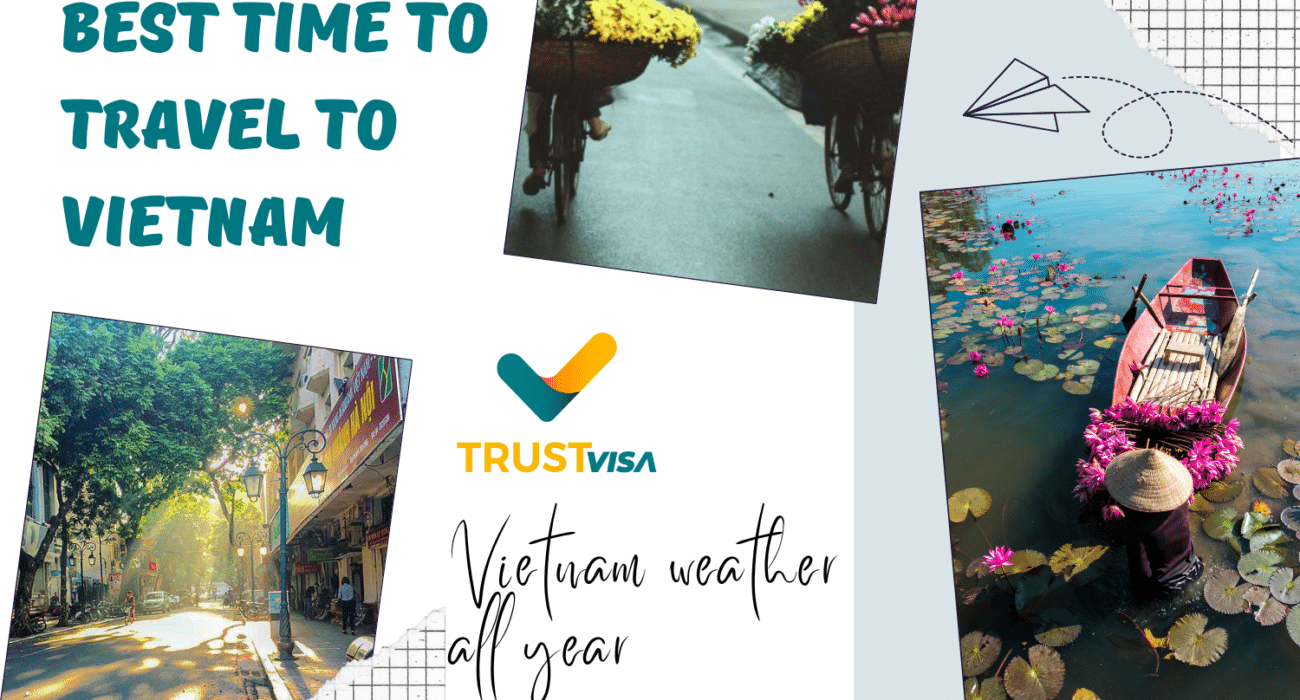TABLE OF CONTENTS
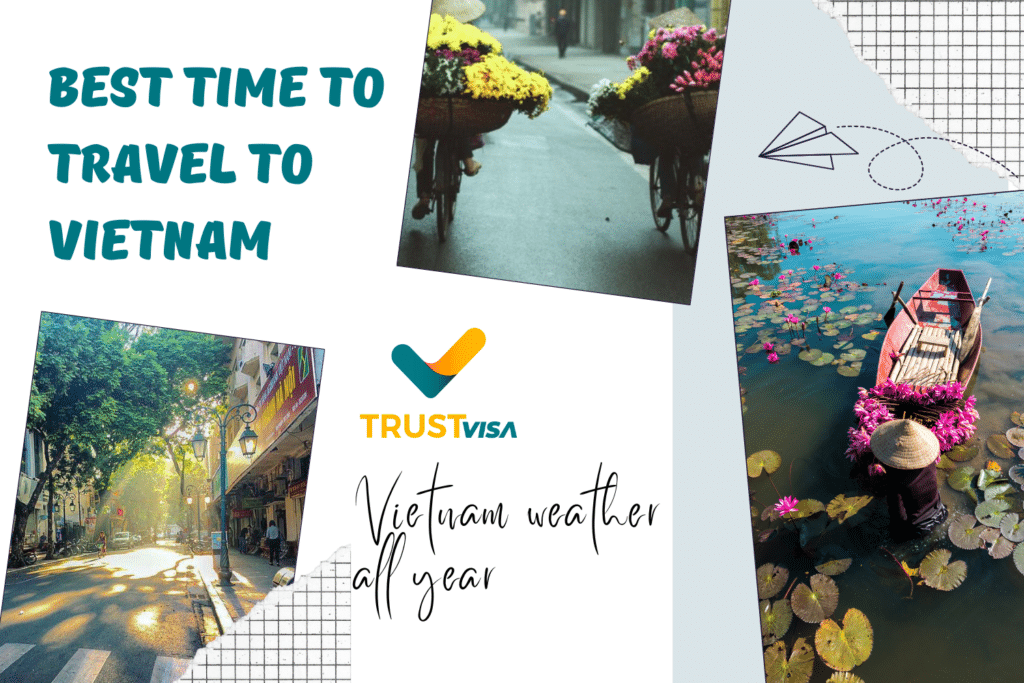
1. GENERAL INFORMATION ABOUT THE WEATHER IN VIETNAM
Vietnam is a tropical country so you should have a general idea of how its weather is all year. However, the weather of Vietnam is separated into 3 distinct areas from North to South.
1.1. Northern Part's Weather
The North of Vietnam has 4 seasons: spring, summer, fall and winter, with distinct features:
- March to May (Spring): Cool weather, with plenty of drizzle rain and may have too much moisture in the air.
- From June to August (Summer): High temperatures, which could easily go up to 39 or 40 degrees Celsius, come with heavy rain and storms.
- September to November (Fall): Clear blue sky, cool temperature, very little rain, may cause discomfort because of the dry weather.
- December to February of next year (Winter): Cold weather can reach as low as 10 Celsius, and snow can appear in mountainous regions like Sa Pa.

1.2. The Weather Of Central Vietnam
The weather of the North Central Coast, Central Highlands and South Central Coast of Central Vietnam has some distinctions.
1.2.1. The Weather Of North Central Coast Of Vietnam
North Central Coast region includes provinces from Thanh Hóa to North of Hải Vân Pass (famous because of some beaches: Sầm Sơn beach – Thanh Hóa, Cửa Lò beach – Hà Tĩnh). This region is adjacent to North Vietnam, so the weather shares many similarities. During winter, this region is as cold as the northern provinces, but it also has plenty of rain due to the way the wind blows from the ocean. During summer, this region is very hot and dry because of seasonal wind from Laos.
The weather of this region throughout the seasons:
- February to April (Spring): Cool weather, average temperature 22-29 Celsius.
- May to August (Summer): Hot, dry, could lead to drought.
- September to November (Fall): A bit cold, with plenty of rain.
- December to January of next year (Winter): Cold with plenty of wind, average temperature is around 17-20 Celsius.
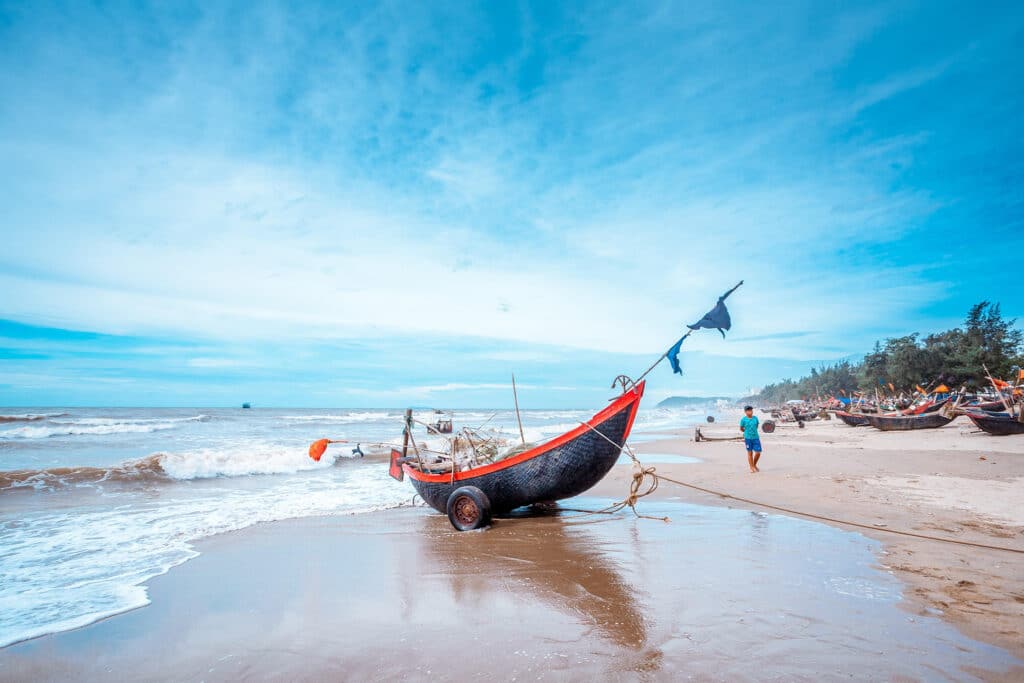
1.2.2. The Weather Of Central Highlands
The Central Highlands consist of Lâm Đồng, Đắk Lắk, Đắk Nông, Gia Lai and Kon Tum provinces; this region has a near equator climate with an average temperature of around 20 Celsius. Day and night have a temperature difference of 5.5 Celsius.
The Central Highlands has 2 distinct seasons:
- November to April (Dry season): Drought, high temperature, very little rain.
- May to October (Rain season): Hot and humid weather, lots of rain.
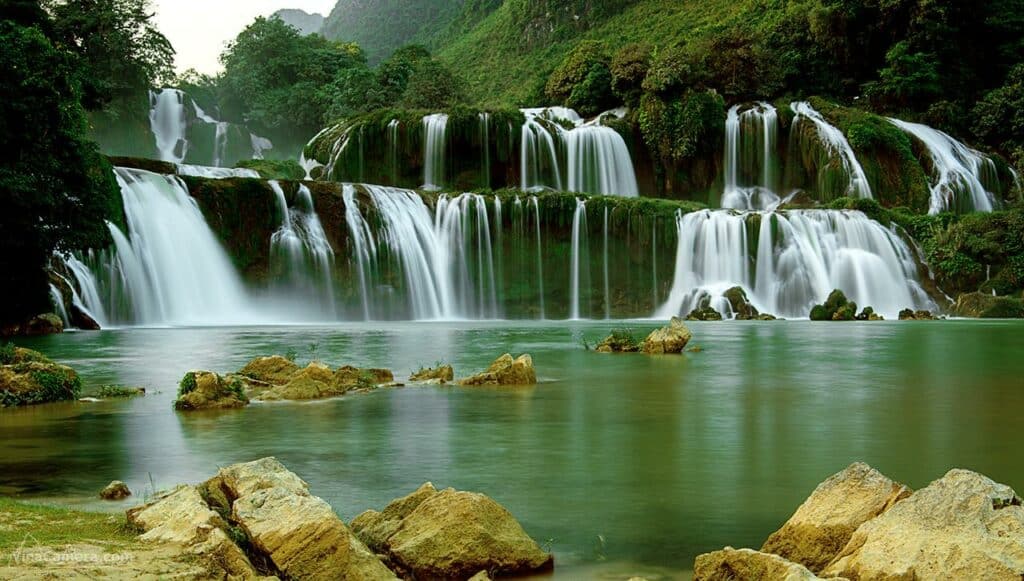
1.2.3. The Weather Of South Central Coast
The South Central Coast region consists of provinces from Quảng Bình to Bình Thuận (which has many beautiful tourist attractions: Phong NhaKẻ Bảng at Quảng Bình province, Huế city, many beaches at Đà Nẵng, Nha Trang, Phú Yên, Quy Nhơn…). This region has a tropical climate with high temperatures and high humidity.
South Central Coast only has 2 distinct seasons: dry and rainy seasons but the time is different from Central Highlands
- December – August (Dry season): Hot, dry weather with very little rain and regular drought.
- September – November (Rain season): Regular heavy rain can cause landslides and floods.
This difference creates diversity in weather and natural scenery, making Central Vietnam an attractive destination for foreigners who want to explore and experience the unique culture and scenery of this region.
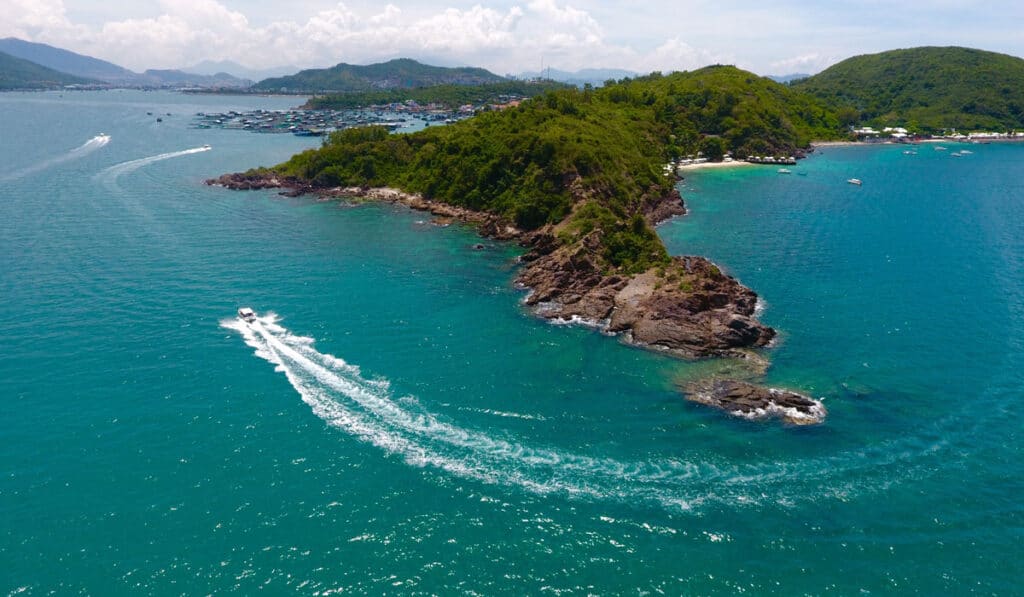
1.3. The Weather Of The Southern Part Of Vietnam
South Vietnam has a near-equator climate, which means it has 2 seasons: dry and rainy seasons.
- May to October (Rain season): Pouring rains, hurricanes, average temperature around 25 – 33 Celsius.
- November to April (Dry season): Very little rain, high temperature, with long droughts.
But there are some distinctions between the weather of South East region (Hồ Chí Minh City, Tây Ninh, Bình Dương, Bình Phước, Đồng Nai, Bà Rịa – Vũng Tàu provinces) and the Mekong Delta (South West region. The Southeast region has a calmer climate and fewer natural disasters. The Mekong Delta has high temperatures and lots of rain, which makes it a perfect region for farming and aquaculture.
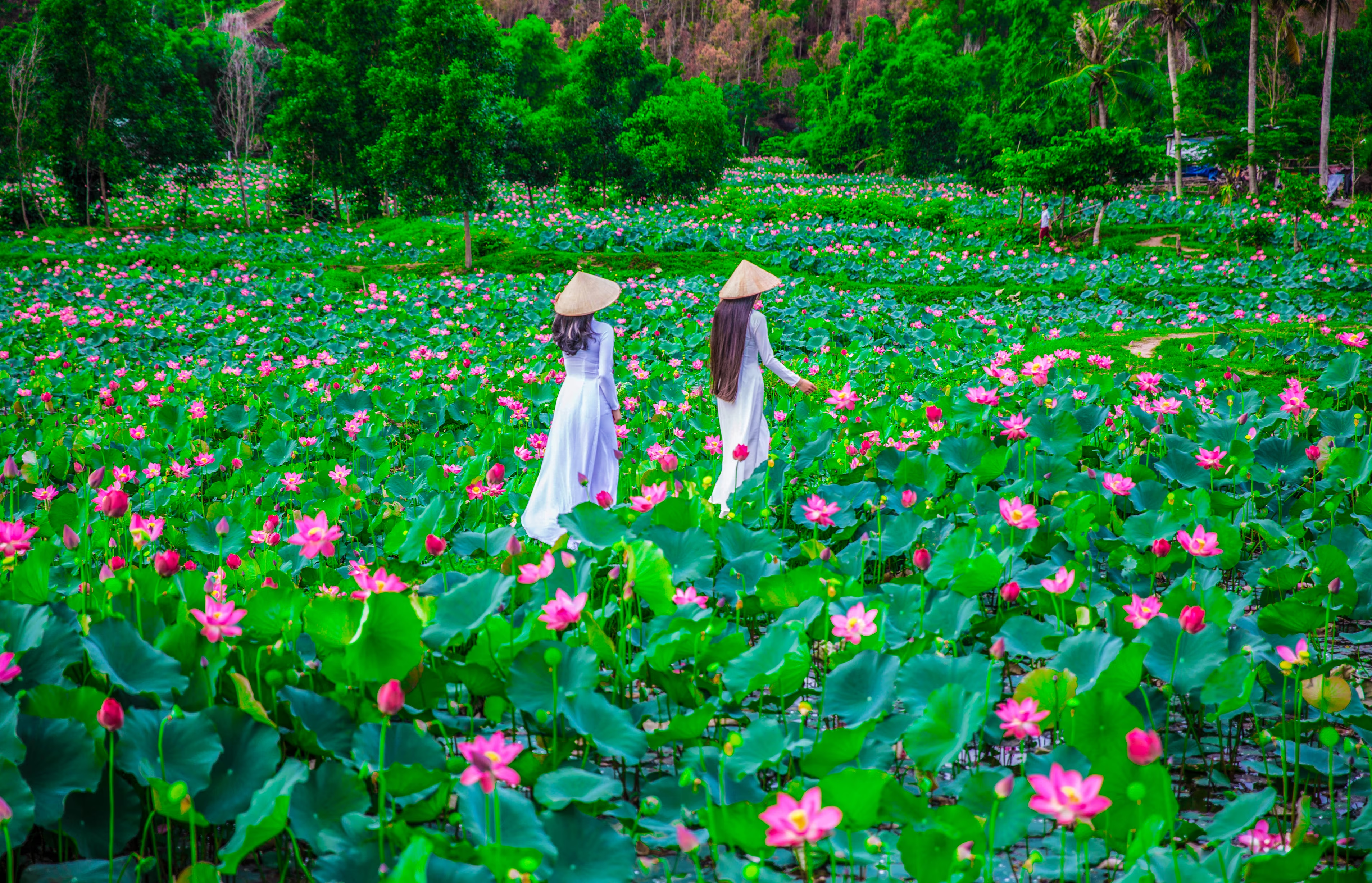
2. WHEN SHOULD YOU TRAVEL TO VIETNAM?
If you are planning to travel to Vietnam, the information below is certainly useful for you:
2.1. When Should You Go To Northern Mountainous Region Of North Vietnam?
Some destinations that you can visit in North Vietnam where there are lots of mountains.
| Tourist attractions | When should you arrive |
|
|
The mountainous region of North Vietnam is famous for majestic mountain ranges, green valleys and numerous indigenous villages. Famous tourists attractions include: Sa Pa province, Bắc Hà (Lào Cai province), Mù Cang Chải (Yên Bái province), Hà Giang province, Mộc Châu province, Cao Bằng province,…
The ideal time to travel here is from September to November (Autumn) and from March to May (Spring). During the fall season, the weather is cool, the air is fresh, and the yellow rice paddies create beautiful scenery. During the spring season, all kinds of flowers bloom, creating a perfect atmosphere for trekking exercises. In addition, during summer, the region still has a cool climate, suitable for tourists trying to get away from the scorching sun in the cities.
Finally, you should avoid going here during winter, which is from December to February, due to the cold weather which can lead to frost, snow making travel a horrible experience.
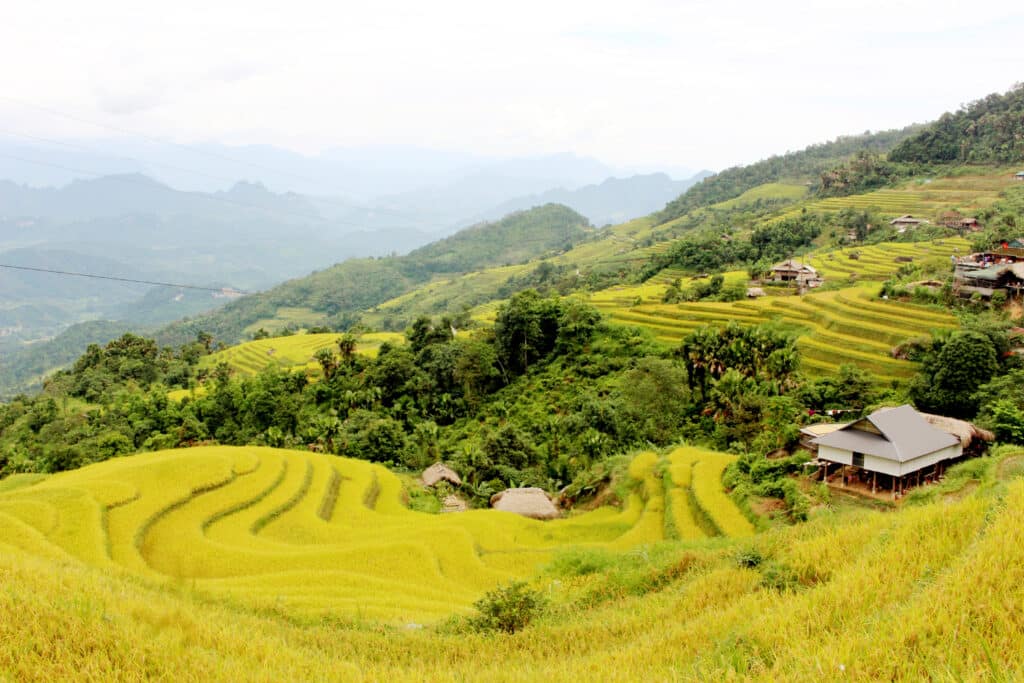
2.2. When Should Go To North Vietnam For Travel?
Here are some suggestions if you want to visit North Vietnam.
| Tourist attractions | When should you arrive |
|
|
North Vietnam includes the Capital city of Hanoi and its surrounding areas such as Ninh Bình, Hạ Long and Tam Đảo provinces. You can visit these places year round, but during Fall (September to November) and at the end of Winter, beginning of Spring (January to April) are the best time to travel.
Spring in North Vietnam is warm and full of festivals. Meanwhile, during Fall, the weather is cool, with clear sky and the trees starting to turn yellow creating a dreamy landscape. This is the perfect time to visit Hạ Long Bay, with its majestic islands and clear blue water.
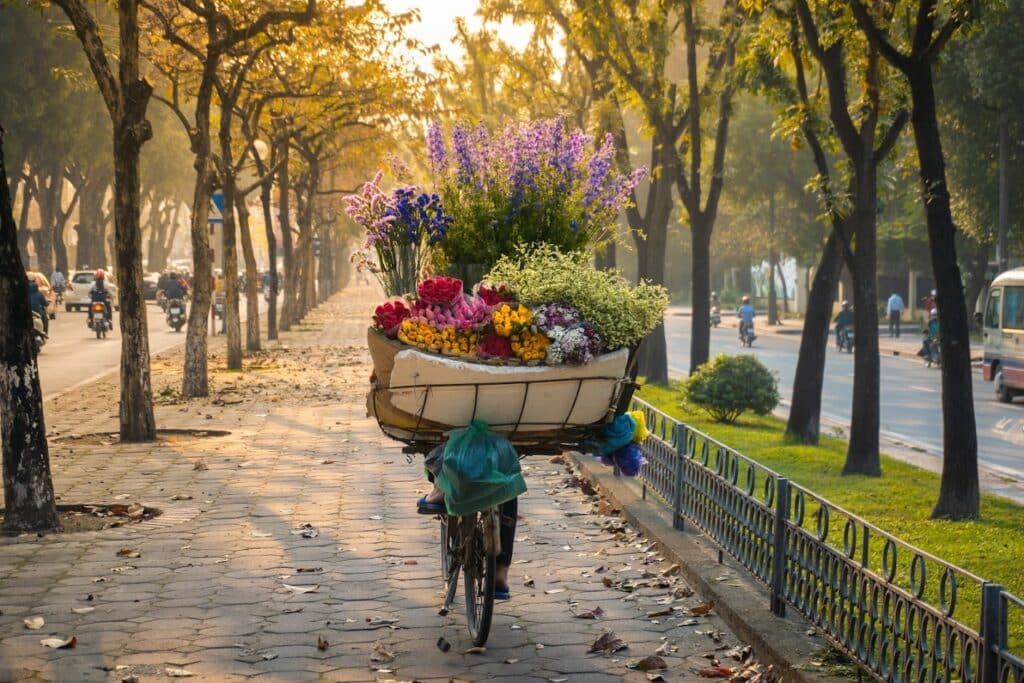
2.3. When Should You Visit Central Vietnam?
Here are some suggestions if you want to visit Central Vietnam
| Tourist attractions | Most suitable time |
| November to April during the dry season. It has very little rain therefore waterfalls are calm, easier to traverse. |
| From April to August when the weather is calm with little rain and some sun. |
Central Vietnam has a diverse cultural and natural attractions. You can travel to Đà Lạt, the city of thousands of flowers, or travel to the Central Highlands and take pictures of many big waterfalls (Dray Nur, Dray Sáp, Gia Long) or Lắk Lake, Chư Yang Sin national reserve… The best time to travel to this region is from November to April when it has less rain.
If you are planning a trip to the South Central Coastal region of Vietnam (Hội An, Huế city, Đà Nẵng province, Nha Trang province, Quy Nhơn province) consider going there sometime between April and August. This is when the weather is pleasant, with little rain or sun, creating a perfect climate to visit historical sites enjoy the local atmosphere or participate in outdoor activities such as trekking, mountain climbing, surfing, diving or just simply relax at one of many beautiful beaches.
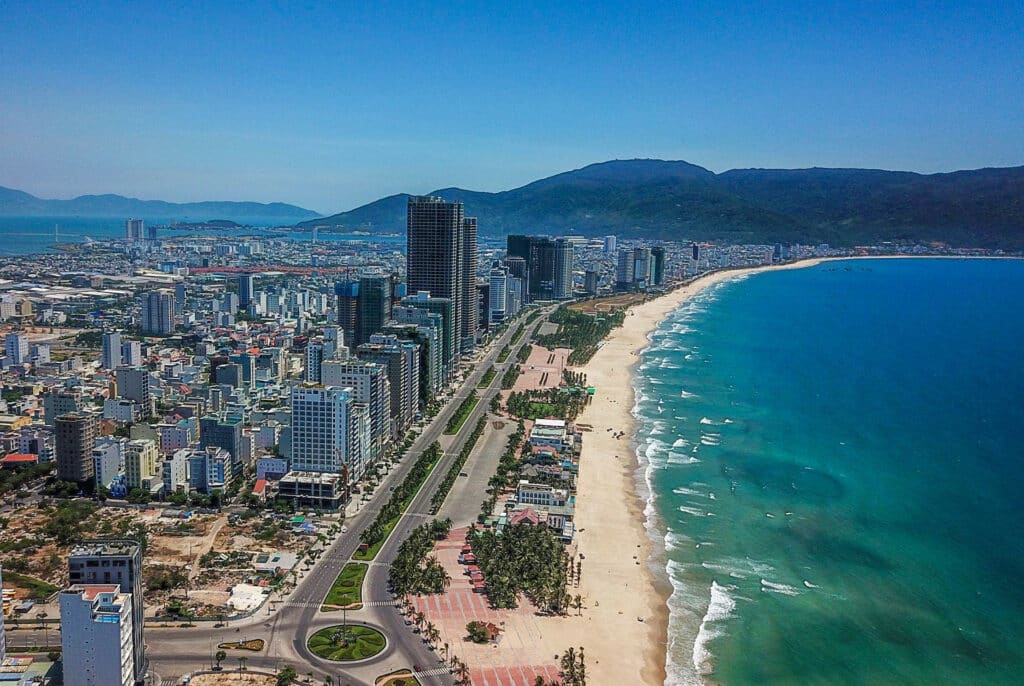
2.4. When Should You Travel To South Vietnam?
Here are some suggestions if you are planning to travel to South Vietnam:
| Tourist attractions | Most suitable time to visit |
| Whenever you want. |
| September to December: during flood season. |
Island tourism centers:
| March to September: Clear sky, high temperature, suitable for beach activities |
| October to April: Clear sky, high temperature, suitable for beach activities |
The South East region of South Vietnam has a temperature climate, suitable to visit year round.
If you want to go to the Mekong Delta, travel here during the flood season (September to December). With many flowers blooming bringing a new atmosphere to the entire region.
If you want to visit Côn Đảo island, Né Cape – Bình Thuận province, go there between March and September to enjoy calm beaches and weather suitable for outdoor activities. And in reverse if you want to travel to Phú Quốc island, do so in between October and April to avoid rain and storms.
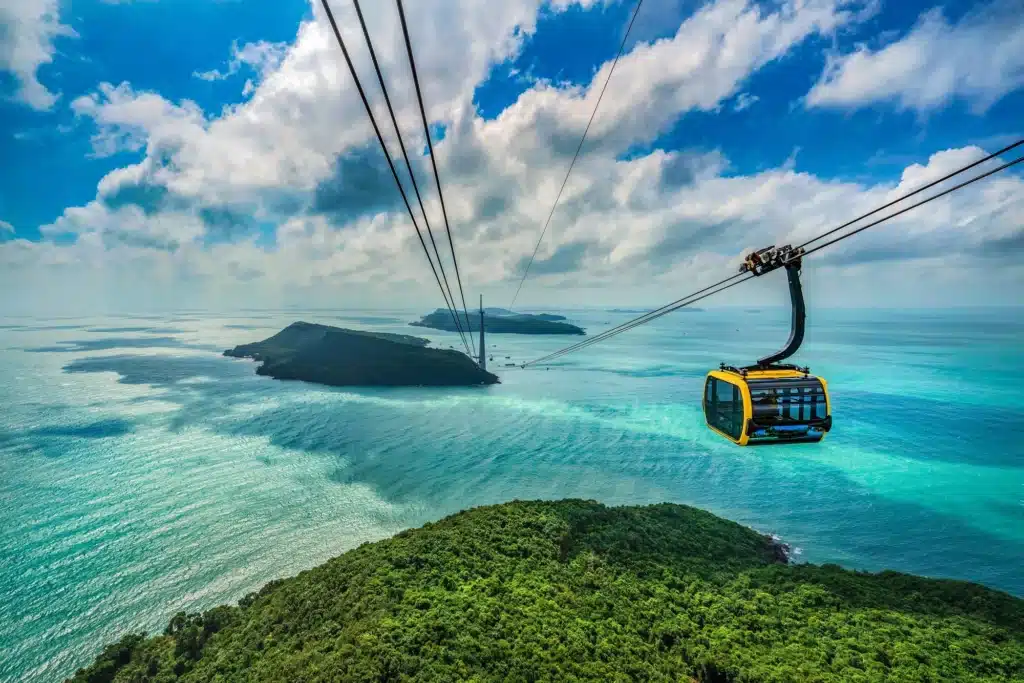
Vietnam’s weather all year will always bring you memorable experiences. Each season, each region all has their own unique beauty to offer tourists. Plan your trip to Vietnam today!




